Explore the unique charm of the Cai Rang Floating Market in Can Tho, a bustling hub in the water-rich Mekong Delta region.
Discovering the renowned Cai Rang Floating Market and immersing yourself in the life of the people in the water-rich Mekong Delta will leave you with many memorable experiences during your Can Tho travel. Pack your bags and head to this serene countryside village now!
For more information, visit Vietnampeace.com.
1. Introduction to Cai Rang Floating Market in Can Tho
1.1 History of the Formation of Cai Rang Floating Market
Embracing the distinctive characteristics of the water-rich Mekong Delta, Cai Rang Floating Market is an attractive destination that draws locals and familiar tourists exploring Can Tho. Formed in the early 20th century, Cai Rang Floating Market is where people from the Mekong Delta come to exchange and trade goods, especially the specialties of the Cuu Long River Delta.
Located at the confluence of the Hau River and Cai Rang River branches, the Cai Rang Floating Market benefits from its strategic location in shallow waters, making it convenient for boats to anchor. Over time, many ships gathered here, turning it into a bustling floating market. In 2016, the Cai Rang Floating Market was recognized as a national intangible cultural heritage, becoming a source of pride for the people of the water-rich Mekong Delta.
Address: Can Tho River, 46 Hai Ba Trung Street, Ninh Kieu District, Can Tho City.
1.2 Ideal Time to Explore Cai Rang Floating Market
The ideal time to visit the Cai Rang Floating Market in Can Tho is from December to April, as the weather is sunny with little rain, making it easy to explore the market. This is also when fruits are in season, allowing you to indulge in buying the specialties of the Mekong Delta at the floating market. From May to December, Can Tho experiences the rainy season, and trading activities at the market may temporarily pause.
Cai Rang Floating Market starts early so you can begin your unique market exploration from 4 am onwards. At this time, numerous boats gather, creating a lively and cheerful atmosphere. Primarily, you can admire the beautiful sunrise over the picturesque river.
2. Guide to Getting to Cai Rang Floating Market
Nowadays, Can Tho offers various routes for exploring the Cai Rang Floating Market, starting from Ninh Kieu Wharf. To reach this place, you can rent a boat or ferry, depending on the number of people. If you have a small group, opt for a small boat, and for larger groups, consider a ferry to save costs. Don’t forget to check out the travel guide for many Can Tho exploration tips!
For your reference and consideration, the rental prices at Ninh Kieu Wharf are below. Prices may vary depending on the time, especially during holidays and Tet (Vietnamese New Year).
– 1-7 passengers: 500,000 VND/boat
– 8-15 passengers: 600,000 VND/boat
– 16-30 passengers: 700,000 VND/boat
– 31-40 passengers: 800,000 VND/boat
– 40 passengers and above 900,000 VND/boat
3. What’s interesting about Cai Rang Floating Market in Can Tho?
On the journey along the Cai Rang Floating Market in Can Tho (with a tour duration of about 4 hours), we will sequentially pass through various points and experience exciting activities as follows:
– Explore bustling trading activities at the floating market
– Have breakfast and enjoy delicious dishes right on the boat
– Indulge in a variety of fruits at the riverbank orchard
– Visit the Quê Tôi coconut candy workshop
– Explore the traditional hủ tiếu noodle factory
– Enjoy traditional folk music performances on the river
3.1 Unique “4 Hanging” and “Bẹo” Tree Method at Cai Rang Floating Market in Can Tho
Cai Rang Floating Market offers a diverse range of goods. Each boat sells different items, from fresh and delicious fruits of the Mekong Delta to essential household items.
Due to the expansive space of the floating market and the loud noise of waves and engines, traditional selling calls are not effective. Instead, sellers hang their goods on a pole, locally known as “bẹo,” making it easy for buyers to identify their needs.
The “4 Hanging” method includes:
1. Hang what is being sold: If a boat is selling watermelons, they will hang watermelons on the pole.
2. Hang without selling: This includes clothes from many floating households.
3. Sell without hanging: Only small boats discreetly offer goods like noodles, hủ tiếu, coffee, and sandwiches to shoppers.
4. Hang one thing but sell another: If you see a piece of roofing material hanging, it signifies the boat is for sale.
Traders transfer goods from one boat to another by tossing or passing items hand-to-hand. Immersing yourself in the market’s atmosphere, you can learn about the waterway life of the locals, living in their “mobile homes” complete with TVs, kitchens, and potted plants.
Have you ever wondered why Cai Rang Floating Market sells so many fruits? All floating markets in this region are near fruit orchards, serving as distribution points for various locations.
Visiting the floating market, you’ll have the opportunity to taste a variety of seasonal fruits such as fragrant pineapples, mangoes, strawberries, watermelons, oranges, coconuts, rambutans, custard apples, bananas, pomelos, and more.
3.2 Explore the Culinary Market on the River
If you visit the floating market from 5 to 6 am, 7 am is the perfect time for breakfast. Here, you’ll find fresh produce like sweet potatoes, pumpkins, sweet potatoes, and taro and a variety of breakfast items.
To serve locals and tourists, many small boats meander through the river, offering breakfast options such as porridge, pork rice, hủ tiếu, bún riêu, bún xào, and various drinks like tea, coffee, coconut water, and soy milk. Don’t be surprised to find a floating bar on the river!
Among the numerous delicious dishes available, hủ tiếu and dried coffee are two specialties you must try at Cai Rang Floating Market. These unique and tasty dishes originated from the local waterway culture.
Speaking of the creation of hủ tiếu, it happens when the boat selling hủ tiếu stops, and customers eat the soup right there. With no tables and chairs like on land, this hủ tiếu is consumed on a swaying boat, giving it the name hủ tiếu lắc. In the past, people used porcelain bowls and waited for customers to finish before reclaiming the bowls. Nowadays, to save time, many boats use plastic bowls to take away.
The creation of the unique dried coffee is also enjoyable. The coffee cools quickly when selling coffee on the river, where there’s often a breeze. Therefore, sellers use a unique stove (similar to a water heater) and burning firewood to keep the coffee warm, hence its name. Dried coffee is also a familiar dish for the Chinese community if you’ve ever wandered through cafes in Saigon.
Just a visit to Cai Rang Floating Market once, witnessing the waterway life of the locals, living on their “floating homes” with TVs, stoves, and potted plants, will undoubtedly make your Can Tho trip more interesting than ever.
3.3. Indulge in Unlimited Fruits at the Riverbank Orchard
The next destination is the Ba Cống fruit garden. A small tip I learned from my previous 3-day, 2-night trip to Can Tho: After exploring the floating market, visit the Quê Tôi coconut candy workshop first, then return to the orchard. Since you’ve already had breakfast, this will help curb your appetite.
Entrance fee to the fruit garden: 15,000 VND/person
After touring the orchard and taking photos with various fruit trees, you’ll be served a small plate of fresh fruits, about 4-5 types depending on the season (this is included in the initial fee). If you want to buy fruits here, just let the garden owner know; they are very easygoing and might give you a little extra.
3.4. Que Toi Coconut Candy Workshop
Coconut candy is an indispensable snack in everyone’s childhood. Do you know how coconut candy is made? At the Quê Tôi coconut candy workshop, you’ll learn how to make small, delicious coconut candies.
There is no entrance fee. After the tour and maybe participating in the candy-making process, such as stirring the boiling candy mixture on the stove or packaging candies, you can visit the souvenir shop and purchase some memorable items. Don’t forget to buy some Can Tho coconut candy for your loved ones back home!
3.5. Participate in Making Hu Tieu at the Traditional Hủ Tiếu Factory
The traditional hủ tiếu factory is an attractive tourist spot in Can Tho. Here, you will witness the process of making traditional hủ tiếu and taste the unique “Pizza hủ tiếu” that surpasses your expectations.
This traditional hủ tiếu factory has a long history. You’ll observe various stages of hủ tiếu production, from making rice paper from flour, drying it, cutting it into hủ tiếu strands, and other steps.
Moreover, it’s not just about observing; you’ll have the opportunity to personally try some steps in making traditional hủ tiếu. The place offers various types of hủ tiếu with natural colors, each derived from different ingredients. Red comes from gấc fruit, green from pandan leaves, and white from rice flour.
3.6. Listen to Tài Tử Music on the River – A Gem of the Southern Waterway Region
One of the most unique aspects of the Cai Rang Floating Market in Can Tho is that every weekend (Saturday and Sunday), there is a Tài Tử music boat cruising along the river to perform for locals and tourists. This musical ensemble belongs to the Can Tho Department of Culture, Sports, and Tourism. You can also contact them to hire them for a private performance!
While immersing yourself in the melodious tunes of the Southern region and admiring the “everyday” scenes of a floating market, sitting on a boat along the Hau River, you will feel the tranquility and fascination of this region. The sounds of boat engines, the gentle lapping of water against the boats, and the cool breeze tousling your hair… all enhance your affection for the peace and gentleness in this area.
Occasionally, you’ll catch sight of a few rustic wooden boats from a distance, drifting along the murky sediment-laden water. Houses float side by side on the river, and wood workshops and gas stations are situated on the houses on both sides of the water’s edge.
4. Pocket Notes for Visiting Cai Rang Floating Market in Can Tho
To make the most of your floating market journey, take note of these valuable tips:
1. Check the weather information for Can Tho in advance to determine the most suitable time to visit.
2. When renting a boat for the floating market, ensure you have accurate information about the boat rental service, negotiate prices, and agree on the duration and points of interest.
3. Avoid making any upfront deposits, but if required, ensure clear and detailed receipts.
4. Pay attention to the ideal market visit hours suggested in section 1.2 for a comprehensive experience.
5. Consider combining a visit to the floating market with other famous attractions in Can Tho that are accessible by boat, such as the orchard areas or the My Khanh tourism village.
6. Wear a life jacket when moving on the boat.
7. At boat eateries on the river, consider prices before enjoying breakfast dishes like porridge, bun mam, hủ tiếu ti pedagogically.
8. Avoid excessive price inquiries without purchasing, especially with boats selling fruits and produce.
In conclusion, the Cai Rang Floating Market is a vibrant showcase of the Mekong Delta’s cultural richness. Vietnampeace.com provides essential insights for your journey, ensuring a seamless adventure. Let the rhythmic river flow and lively market colors create lasting memories. Visit Vietnampeace.com for more travel inspiration and discover the serenity and flavors of Vietnam’s waterway bliss.

Visit the Cai Rang floating market and feel the bustle of life mixed with idyllic life (Image: Collection)

Experience the rustic lifestyle of people on Can Tho floating market (Image: Collection)

Lenh on a boat to explore the beauty of Cai Rang floating market (Image: Collection)
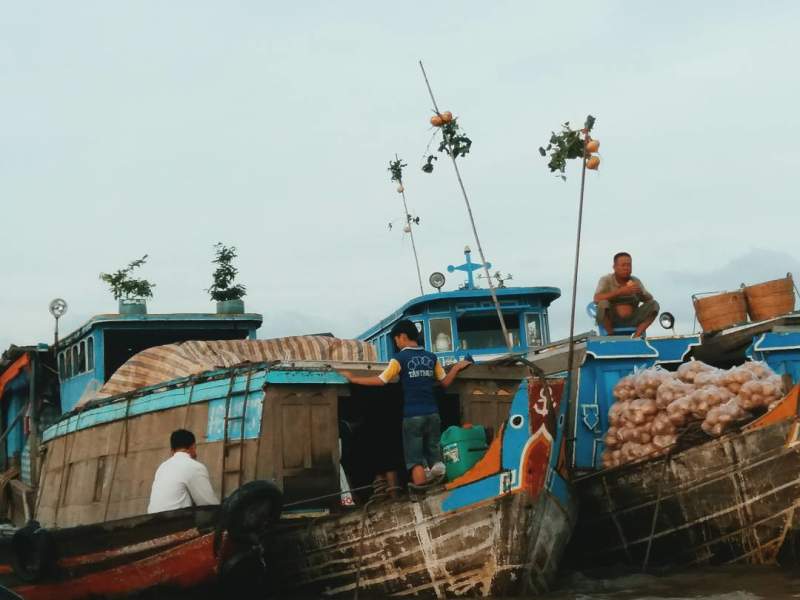
Traders at Cai Rang floating market are eagerly preparing for the fair (Image: Collection)
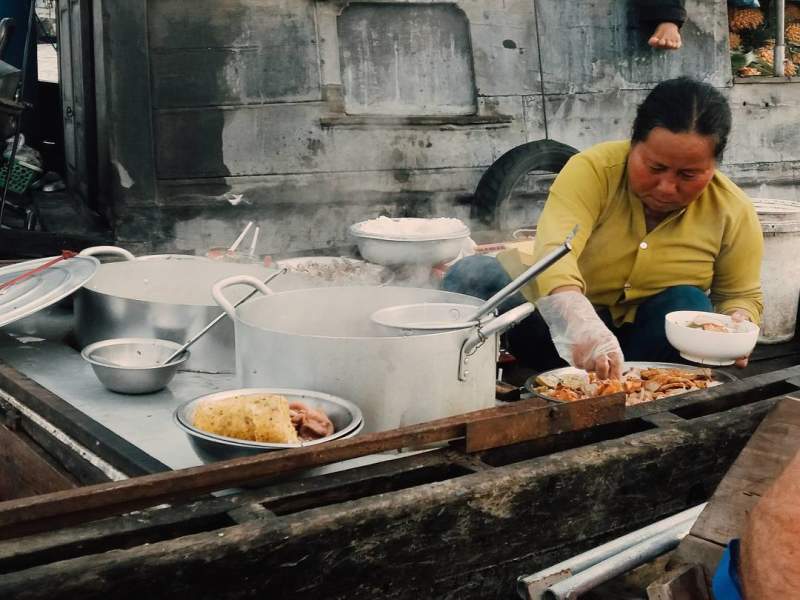
Delicious hot dishes are prepared right on the boat at Cai Rang floating market (Photo: Collection)
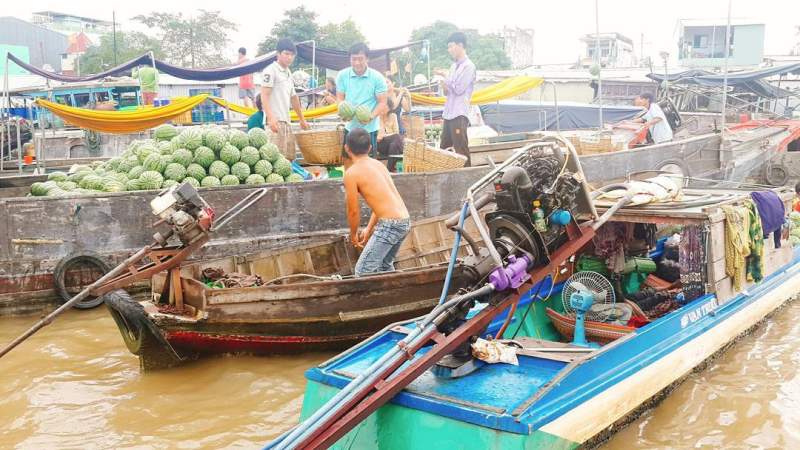
The very busy life of people in the Cai Rang floating market (Image: Collection)
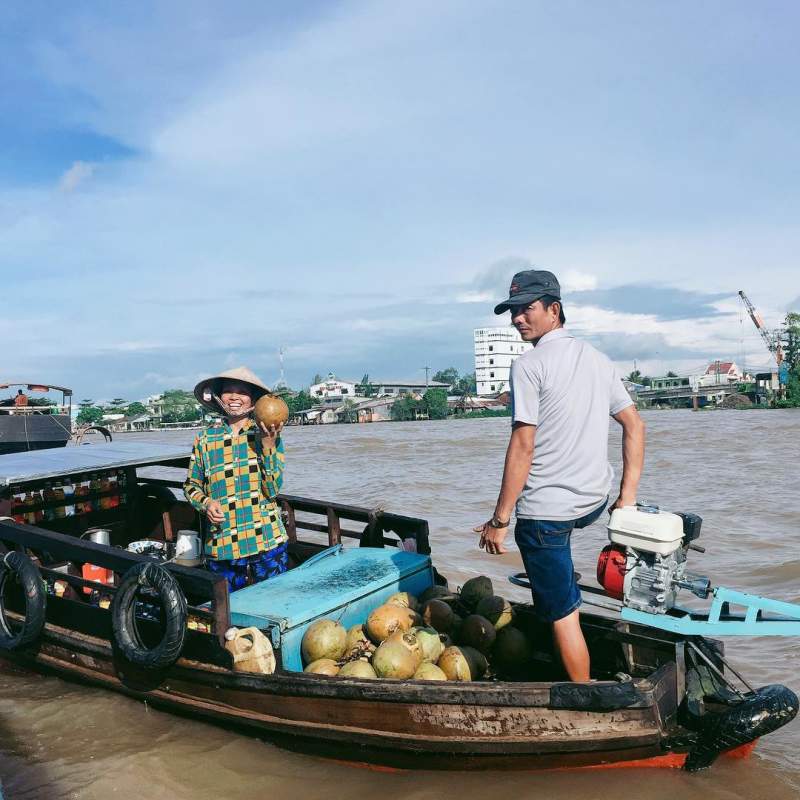
Although busy, smiles are always standing on the lips of people in the Cai Rang floating market (Image: Collection)

The only means of transportation when you arrive at Can Tho floating market is a boat (Image: Collection)
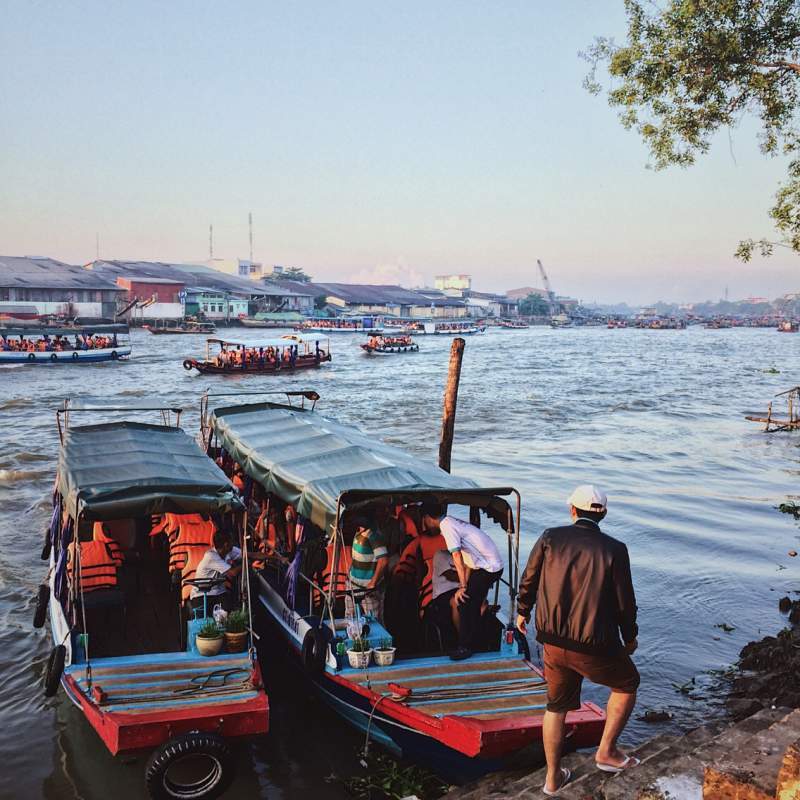
Sitting on the boats to feel the real life of Cai Rang floating market (Image: Collection)
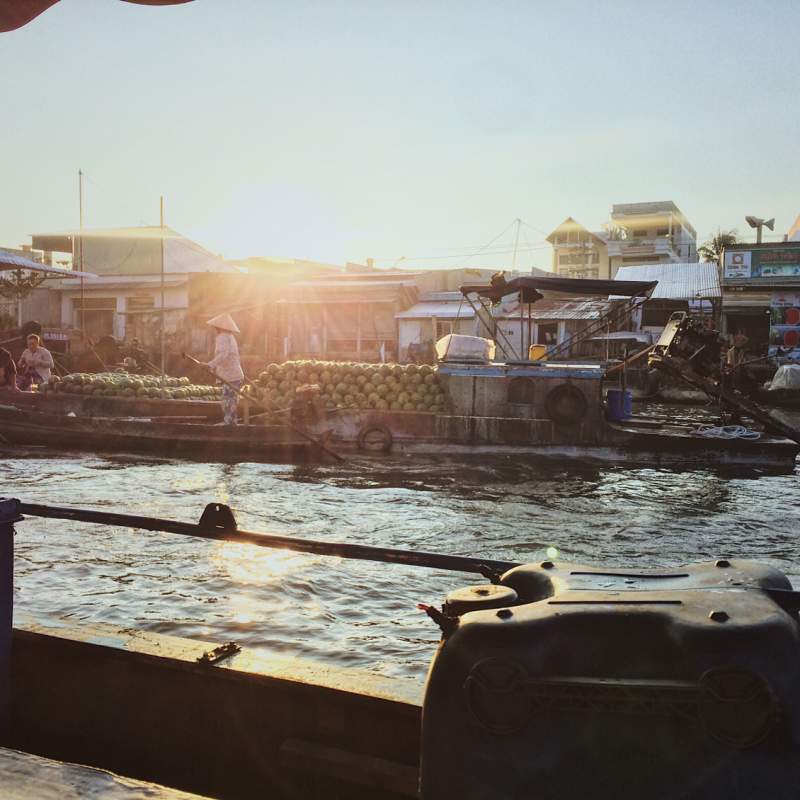
Experience cuisine right on the river floating (Image: Collection)
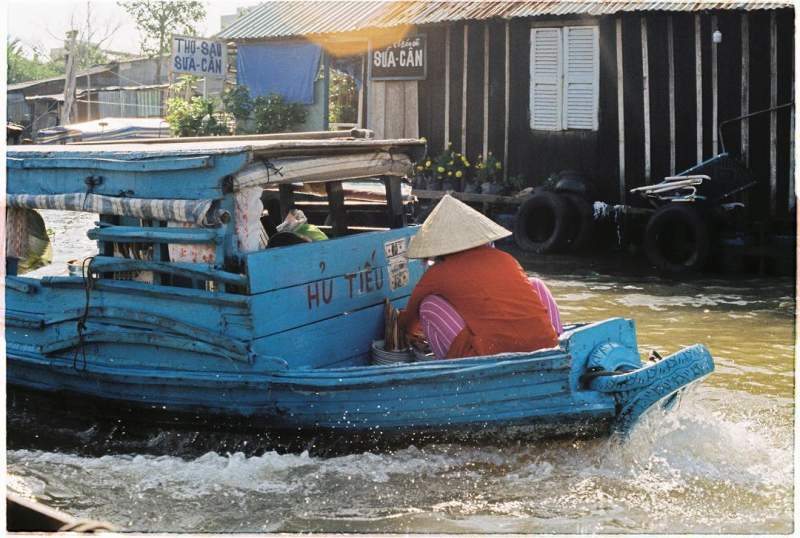
Impressive beautiful scenery in the dim light of the dawn (Image: Collection)
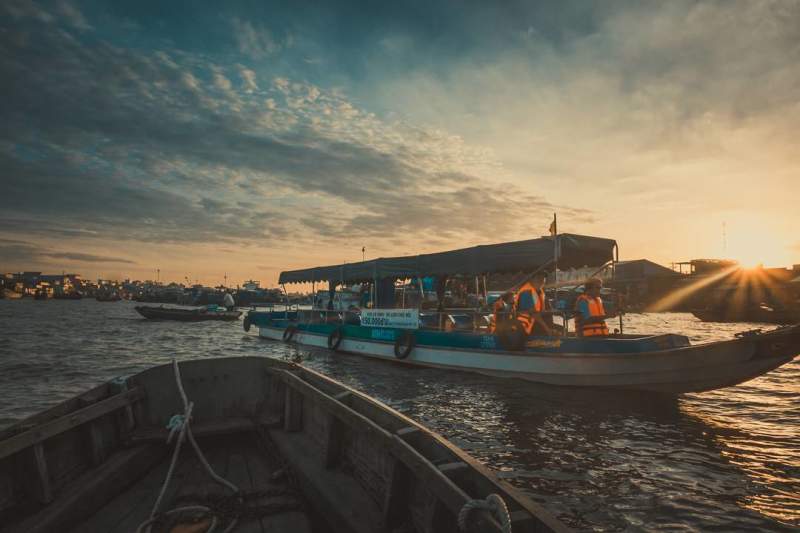
The bustling scene with the rich variety of items at the Cai Rang floating market (Photo: Collection)
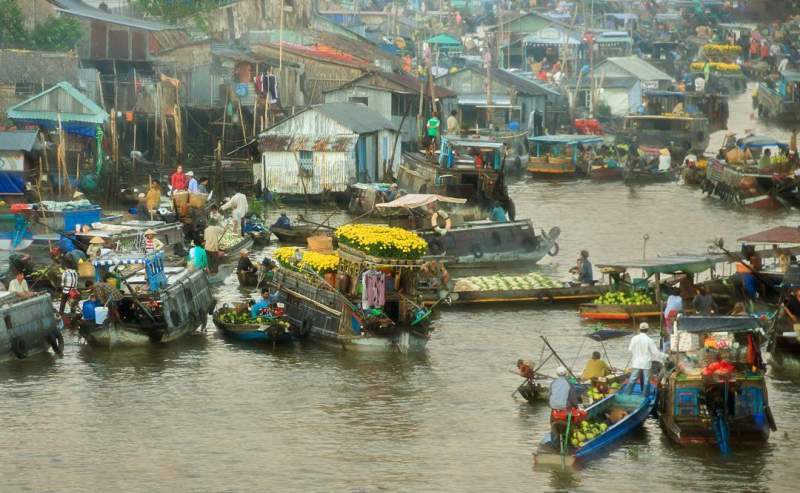
The floating market doesn’t lack anything like regular markets! (Photo: Collection)
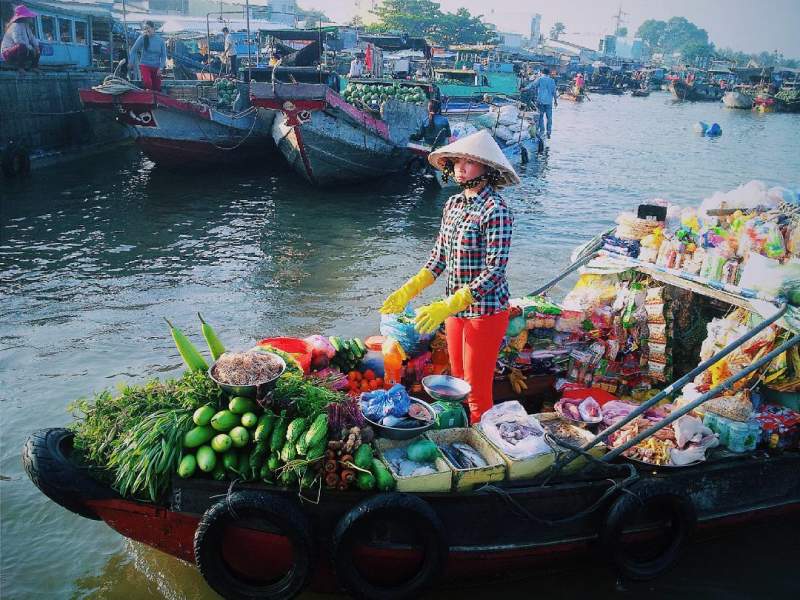
Enjoying the wonderful dishes that you will remember forever (Image: Collection)
